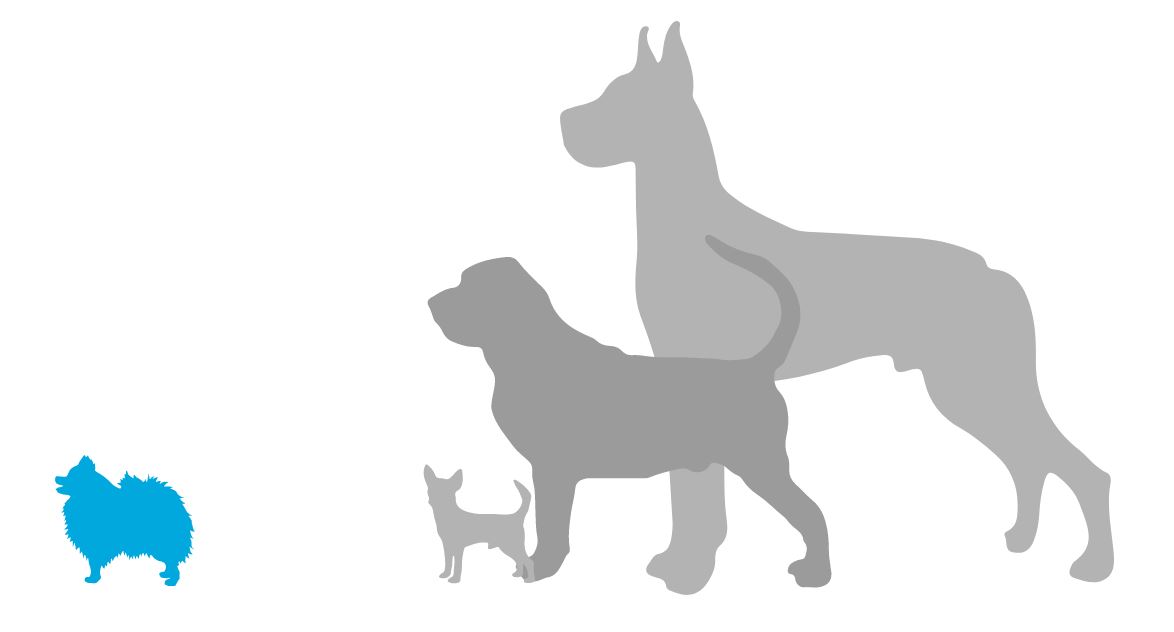Pomeranian for sale Ontario
A Pomeranians personality is generally perky, friendly dogs that love other dogs and people.
However they may be cocky, commanding and animated, even for their small size. ‘Perky’, is putting it lightly for how alert Pomeranians act, they are attentive but can bark excessively although not aggressive.
Care for the Pomeranian includes preparing fresh bowls of dry dog food each day, bathing in dog shampoo and conditioner to keep their coat shiny and grooming out hardened mats every month along with daily teeth brushing with toothpaste and a toothbrush suited for them.
Exercise is important for any dog, playing with them or taking them for walks is a good idea to make sure your Pomeranian gets the exercise they need.
Pomeranians are great for people who spend most their time inside and are attentive to their dogs care.
Keep in mind, Pomeranians aren’t a good fit for small children as the dog isn’t as sturdy as larger dogs.
Pomeranian Information
Pomeranian Basics
Where Are Pomeranians From?
Pomeranians hail from the now-defunct Baltic province of Pomeriania, which was bordered by Germany and Poland.
They were used as guard dogs and herd dogs, and often seen on local trading boats.
They are of the Spitz variety of dogs (long, furry coats, pointed ears and muzzles), which have been seen in paintings as far back as 400 B.C.!
How Many Types of Pomeranians Are There?
برای افزودن متن مورد نظرتان اینجا کلیک کنید
There is only one official type of Pomeranian, though they are sometimes distinguished in between teddy-faced, fox-faced, and baby-doll faced.
Which Breeds Mix with Pomeranians?
Pomchi (Pomeranian + Chihuahua)
Dameranian (Dachshund + Pomeranian)
Pomsky (Pomeranian + Husky)
Pomapoo (Pomeranian + Poodle)
Pomeranian Lifespan
Pomeranians live about 12-16 years.
pomeranian for sale ontario
pomeranian for sale ontario
pomeranian for sale ontario
pomeranian for sale ontario
pomeranian for sale ontario
pomeranian for sale ontario
Pomeranian Size (Height & Weight)
Pomeranians are extra-small dogs, most weighing 4-6 lbs and standing around 9-11 inches tall.
pomeranian for sale ontario
pomeranian for sale ontario
pomeranian for sale ontario
pomeranian for sale ontario
pomeranian for sale ontario
pomeranian for sale ontario
Pomeranian Appearance
What Colors Do Pomeranians Come In?
Pomeranians come in a variety of colors, yet usually sport just one all-over color.
They include orange, white, cream, grey, brown, black, and some shades in between.
How Much Do Pomeranians Shed?
Despite its preponderance of hair, the Pomeranian sheds very little.
pomeranian for sale ontario
pomeranian for sale ontario
pomeranian for sale ontario
pomeranian for sale ontario
pomeranian for sale ontario
pomeranian for sale ontario
Do You Need to Groom a Pomeranian?
Grooming a Pomeranian to show standards can be fairly demanding, as that ball of fluff can be a tough look to achieve.
In order to keep its coat healthy, the Pomeranian needs frequent brushing.
pomeranian for sale ontario
pomeranian for sale ontario
pomeranian for sale ontario
pomeranian for sale ontario
pomeranian for sale ontario
pomeranian for sale ontario
Pomeranian Temperament, Personality & Training
How Much Do Pomeranians Bark?
Pomeranians are territorial and known to be quite fond of their own voices, and are known as the soprano of the dog world.
However, they can be discouraged from barking (or yapping) as much with proper training and exercise.
pomeranian for sale ontario
pomeranian for sale ontario
pomeranian for sale ontario
pomeranian for sale ontario
pomeranian for sale ontario
pomeranian for sale ontario
Are Pomeranians Good with Kids?
Pomeranians are outgoing, friendly, energetic dogs, but they are also more fragile than their confidence belies.
They get along well with children but children must be taught to be very gentle with them because they are susceptible to head and neck injuries.
As with any breed, it is recommended that your child is always supervised when interacting with your Pomeranian to keep both the child and dog safe.
pomeranian for sale ontario
pomeranian for sale ontario
pomeranian for sale ontario
pomeranian for sale ontario
pomeranian for sale ontario
pomeranian for sale ontario
Are Pomeranians Good Family Dogs?
Pomeranians make wonderful family pets, as they thrive on the attention and companionship both of humans and other Pomeranians.
They’re especially a great choice for families with older kids who might be more considerate of their fragile physicality.
Because they’re so small, they don’t demand a lot by way of exercise.
pomeranian for sale ontario
pomeranian for sale ontario
pomeranian for sale ontario
pomeranian for sale ontario
pomeranian for sale ontario
pomeranian for sale ontario
Are Pomeranians Good with Cats?
Pomeranians are extroverted and confident, and though they may love being involved in your cat’s life more than your cat might wish, they generally get along well with felines.
They tend to really bond with cats that have outgoing, playful and adventurous personalities.
As always, it’s best when the dog is introduced to the cat at a young age and socialized properly.
pomeranian for sale ontario
pomeranian for sale ontario
pomeranian for sale ontario
pomeranian for sale ontario
pomeranian for sale ontario
pomeranian for sale ontario
Are Pomeranians Easy to Train?
Pomeranians are surprisingly easy to train if taught at an early age.
pomeranian for sale ontario
pomeranian for sale ontario
pomeranian for sale ontario
pomeranian for sale ontario
pomeranian for sale ontario
pomeranian for sale ontario
Pomeranian Health
Do Pomeranians Have a Lot of Health Problems?
Despite their diminutive size, Pomeranians have a fairly sturdy construction, and are subject to relatively few major health problems, certainly fewer than may afflict other dog breeds.
pomeranian for sale ontario
pomeranian for sale ontario
pomeranian for sale ontario
pomeranian for sale ontario
pomeranian for sale ontario
pomeranian for sale ontario
What Diseases are Pomeranians Prone To?
Legg-Calve-Perthes: This is a condition that causes the head of the femur (located in a dog’s hind leg) to spontaneously degenerate. Over time, this will lead to erosion of the hip joint and arthritis. A Pomeranian suffering from Legg-Calve-Perthes will become lame, limps while walking, and experiences pain when moving the hip joint. Surgery is the most effective treatment for the disorder.
Patellar luxation: Also known as slipped kneecaps, patellar luxation is a common problem in many dog breeds. It occurs when slight abnormalities cause the knee joint to slide in and out of place. This can cause pain and occasional lameness. Surgical treatment is available for severe cases although many dogs lead normal lives without treatment.
Alopecia X: There is a very rare genetic disorder that has led to some Pomeranians having Alopecia X, which turns their skin black and causes their hair to fall out.
Others: Trachea collapse, allergies, epilepsy, eye problems such as cataracts and dry eyes, gum disease, and early tooth loss also affect Pomeranians. Special attention should be made to grooming their teeth, ears, and eyes to avoid some of these issues.
Purchasing vs adopting a Pomeranian
How Much Does a Pomeranian Cost?
You can adopt a Pomeranian at a much lower cost than buying one from a breeder.
The cost to adopt a Pomeranian is around $300 in order to cover the expenses of caring for the dog before adoption.
In contrast, buying Pomeranians from breeders can be prohibitively expensive.
Depending on their breeding, they usually cost anywhere from $800-$3,000.
pomeranian for sale ontario
pomeranian for sale ontario
pomeranian for sale ontario
pomeranian for sale ontario
pomeranian for sale ontario
pomeranian for sale ontario
pomeranian breed information
Pomeranian dogs are as calm, cuddly, and affectionate as they are active, playful, and independent. Ranked as one of the most popular breeds in the United States for over 30 years, the Pom merits its fame to its big heart, agile mindset, and colorful personality.
The Pom is a tiny toy dog with an average height between 8 to 11 inches and an average weight between 4 to 7 pounds. It has a fox-like appearance that charms on sight and a personality that is ideal for any type of owner.
These dogs are loyal and very loving of their humans. They love cuddles and games and are big fans of family adventures.
characteristics
-
The Pomeranians have friendly, extroverted personalities. They are great dogs for children of all ages. They are also well-behaved around other pets, cats, and strangers
-
Receptive to human emotions, they make excellent therapy dogs
-
Poms are clever, easy to train, loving, and lovable and they make great companions for first-time pet owners
-
The Pomeranian size and adoring personalities make them one of the best apartment dogs
-
Independent and confident, these small dogs are well suited for people with busy schedules and for seniors as well as for families with or without children and for singles
-
Vigilant, protective, and fearless, the Pomeranian (the Pom or Pom-Pom) makes an excellent guard dog
-
Adorable and sweet in appearance, with a sharp and agile mind, these cute pooches are great for canine beauty and agility contests
Appearance
The Pomeranian is a fluffy toy-sized dog that measures 8 to 11 inches tall and weighs between 4 to 7 pounds fully grown, with the female being a tad smaller. Their weight can vary depending on their diet and exercise routine.
The Pomeranian has a compact but sturdy body, a foxlike face, sparkly dark almond-shaped eyes, tiny raised ears, a short muzzle, and a small nose that can either be dark or match the color of the coat. The tail is long and puffy and it curls over the back.
The Pomeranian coat is thick, long, and straight, and can have a variety of patterns and markings. The fluffy thick fur comes in a myriad of colors that include red, orange, white, cream, blue, brown, black, black and tan, wolf sable, brindle, or various color combinations.
The most sought-after Pomeranian colors are:
-
White
-
Black
-
Black and white
-
Black and tan
-
Orange
The Pomeranian puppies are so small they fit in a cup with plenty of room to spare.
Tiny dogs like the Mini, Teacup, and Micro, are the smallest members of the Pom pack.
They retain their tiny puppy-like size when fully grown, often resembling a standard Pom puppy.
Both the Mini and the Teacup are very rare even as they have become the most popular puppies in Canada.
Temperament
Pomeranian dogs are highly intelligent and loyal.
Their adventurous nature and animated personalities have made them one of the most popular dog breeds in the world.
Affectionate, lively, and not overly dependent, these dogs are well suited for families with busy schedules and seniors, as well as for families with or without children and singles.
The Pomeranian pups are clever, fast learners with curious minds and sharp intelligence.
They make wonderful companion pets for first-time pet owners.
Loving, devoted, highly receptive to human emotions, with a happy demeanor, and a cheerful personality, the Pom dog has the ideal temperament to be an excellent emotional support and therapy dog.
These puppies are friendly, cuddly, and playful.
They are fantastic with children and other pets, and they love to be in the center of attention where they can entertain.
Vigilant, fearless, feisty, and confident, with a need-to-know attitude, the Pomeranian makes a great guard and alarm dog.
Pom-Pom dogs are also as feisty and fearless as they are adorable and tiny.
They have no real awareness of their toy size and will act around an English Mastiff as if they are equals.
Care
Grooming
The Pomeranian has moderate grooming requirements.
These dogs have gorgeous long coats that need to be brushed and combed a few times every week in order to avoid hair tangles or matting.
It is recommended to wipe their eyes daily and clean their teeth at least once every week.
They should be bathed monthly and have their nails clipped every couple of months.
Hypoallergenic qualities are minimal as these dogs shed seasonally.
As such, they are not the best fit for people suffering from pet-related allergies.
As these dogs became more and more loved in the canine show ring, they have developed a few signature looks and haircuts among which stand out the Teddy Bear Cut, Lion Cut, and the Pomeranian with short hair style.
Exercise Needs
Poms are lively, moderately active, and adventurous puppies.
They enjoy long walks, games of fetch, hide-and-seek, and fun activities with their family and canine friends.
Due to their small size, these dogs don’t have high the activity level or exercise needs that a larger dog might have.
A brisk walk or two every day and some indoor playtime are enough to keep them fit, healthy, and happy.
Health
The Pomeranian breed is a healthy, resilient little dog with very few common health problems. As with all dog breeds, there are a few health conditions that can appear during a Pom’s life.
The most common health issues that these dogs are prone to are gum disease due to poor oral care, cataracts – generally in old age, luxating patella – which is most common after an injury, obesity, and tracheal collapse.
In order to avoid any or all these afflictions, don’t overfeed or over-exercise your Pom, brush their teeth regularly, and try to avoid any type of rough play.
Lifespan
The Pomeranian’s lifespan is between 12 and 16 years.
With proper care, a healthy amount of exercise, high-quality dog food, and plenty of love, their life expectancy can increase significantly.
The oldest Pom to live reached 21 years and 8 months of age.
Training
Poms are very intelligent and highly trainable dogs. They are driven to learn and impress, have eager-to-please personalities, and crave the attention that comes with training.
This dog responds best to gentle methods, calm voices, positive reinforcement, and treat rewards.
Pomeranians are known to be very friendly dogs. Socializing them as puppies should go smoothly as they crave human interaction and are naturally open to making new friends.
Their adventurous nature will have them craving new places to explore and new situations to experience.
They are also independent. They can be left alone for longer periods of time without the risk of them being destructive or yappy.
Although separation anxiety is not common for these dogs, it is always recommended to train them young to become more independent.
History
Throughout history, the Pomeranian also referred to as the Pom, the Pom Pom, or Loulou de Pomeranie, has traveled the world and has gathered an impressive number of admirers.
What was then a sled-pulling dog in the Arctic is now one of America’s toy-sized sweetheart dogs.
From a big working dog to a tiny, sweet, loving companion dog of royal families, the breed’s journey is quite colorful.
The smallest member of the ancient Spitz family, the Pom dog, who was not always as tiny and innocent-looking, is believed to be a descendent of a much bigger Spitz sled dog from the Arctic region.
Centuries ago, the breed’s ancestor, a tall, strong, working dog, made its way to the Pomerania region (now part of Northern Poland and eastern Germany) near the Baltic Sea where it was bred down to a smaller size and given a new name – Pomeranian (a name derived from an old Slavic expression “po more” – by the sea).
From Pomerania, the clever, friendly, and affectionate dogs quickly spread out across Europe and into the hearts of royal families.
Among the Pomeranian’s greatest admirers were Napoleon of France, King George IV, and Queen Victoria.
Queen Victoria was so fond of the breed that she acquired a few small versions of the dogs and bred them down through generations.
It is believed that during her reign, Queen Victoria managed to breed their size down by half, thus creating the tiny dogs so adored today.
From there on, the charismatic dog would travel across seas, oceans, and lands, and would become one of the most popular dog breeds in the world.
One of the most famous Pomeranians in the world was Pomeranian Boo.
Small, white, and incredibly cute, Boo received the title of The World’s Cutest Dog, gathering over 16 million appreciations on social media.
Thanks to their great popularity and the many wonderful qualities they possess, these toy dogs have long been selected to participate in the creation of new mixed/hybrid dog breeds.
One of the most popular mixes is the Pomeranian-Husky who is also known as Pomsky.
This designer breed mix is as gorgeous as it is wild. Some refer to this wolf-like dog as the Pomeranian with blue eyes.
Other famous Pom mixes are:
-
Pomchi
-
Yorkie Pom
-
Shiranian – Shih Pom
-
Corgi Pom
-
Pomapoo
-
Pom-a-pug
-
Maltipom
-
Dameranian
-
Pomachon
-
Pom-shi
-
Pom Terrier
-
Jackaranian
-
Aussiepom
-
Pomeagle
-
Poshie
-
Pomerat
-
Pomimo














